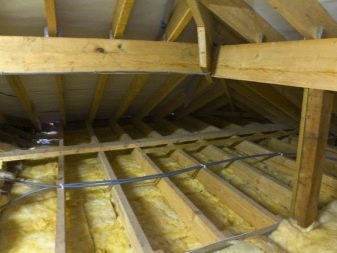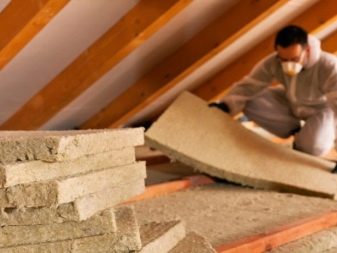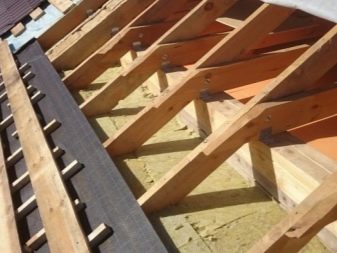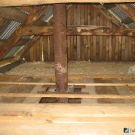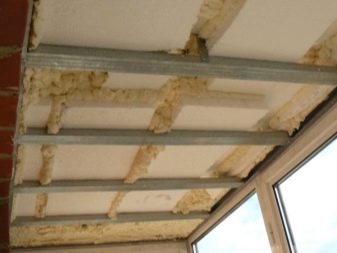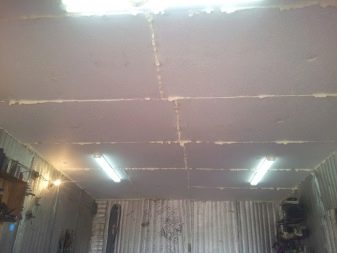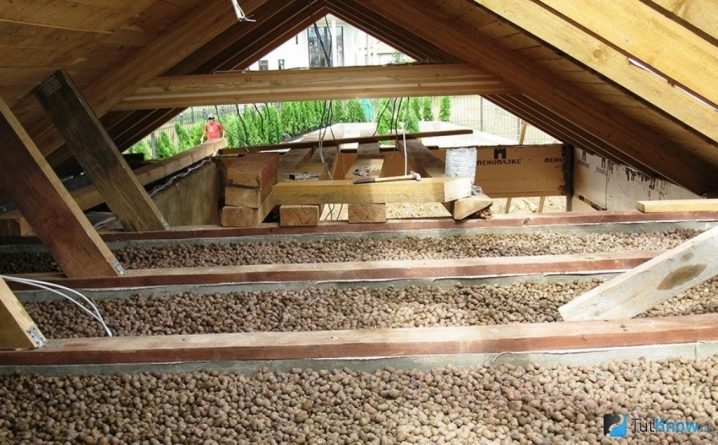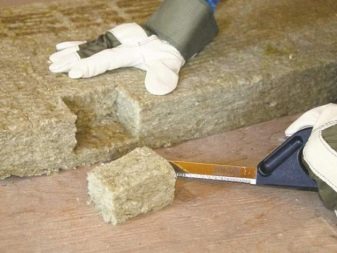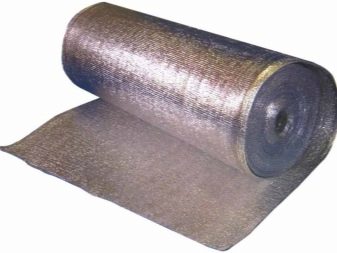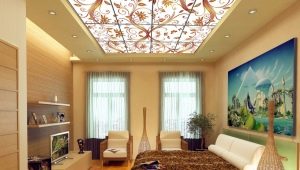Insulation for the ceiling: features of choice
Building a wooden house is the fastest way to get your own housing. If the owner has the intention to live there not only in the warm period, but all year round, then you need to seriously approach to its decoration. In the conditions of the Russian climate, weatherization is important when building a residential house.
The more the owner of a private house is faced with the problem of high heating costs, the faster he comes to the conclusion that the room needs to be further warmed. Thermal insulation of the ceiling space in this matter is extremely important. This is due to the movement of air through the room.
If the ceiling is not insulated, there is no heat reflector, then most of the warm air will go through it.
According to physical laws, heated air will always be at the top. Therefore, if energy-saving packages are supplied, walls are insulated, good doors are installed, but the ceiling is not insulated, all efforts will be in vain.
Special features
There is a design warm roof, which provides for a complete insulation of the roof. This is a mandatory element of construction, used in places under which there will be residential premises. Today, many house projects use the attic as additional square meters for living rooms.
This type of roofing is recommended to use if the house is heated throughout the year. This will help avoid the loss of warm air through the slope of the roof.
But do not forget that this design requires more investment than the roof of the cold type. In a warm roof, the materials are layered in this order: a waterproofing layer, then insulation, and in the end - the installation of the roof.
Design cold roof consists of a different structure. The cold roof is actual in those houses where the mansard room is not heated in the winter and nobody lives there.
The roof is lightweight, the cost of installing it is low, and the installation itself is quite simple compared to a warm roof device. The cold roof is practical and budget for country houses, where people do not live all year round.
To keep warm and reduce heating costs, the ceiling space, located under the cold roof, is insulated with thermal insulation materials. For example, expanded clay or mineral wool.This is the right decision, since warm air always rises.
Types and characteristics
There are dozens of types of insulation for country houses on the building materials market. To understand what material is required, you need to carefully study the range and characteristics of the products offered. You can, for example, choose loose, loose or backfill insulation, it all depends on your preferences.
The main indicators on which to rely when choosing insulation:
- Thermal conductivity of the material. The lower it is, the better.
- Indicators of moisture resistance. These criteria are important if the insulation is mounted on the outside of the building.
- Strength.
- Big operational term.
- Insulation should not cause harm to human health.
- Flammability It is preferable to use non-combustible types of materials.
The most famous thermal insulation materials are:
- bulk clay;
- sawdust and shavings;
- mineral wool;
- glass wool;
- extruded polystyrene foam;
- Styrofoam;
- polyurethane foam.
It is necessary to consider the most popular heaters in more detail.
Styrofoam
Polyfoam has long broken all records of its popularity.It is light in weight, there is in every hardware store, inexpensive. The degree of strength of the foam meets the requirements that are put forward to the ceiling insulation. Any builder is able to cope on his own with insulation using foam squares.
Of course, it is impossible not to mention a few negative points. This material is combustible and practically not vapor permeable. The builders did not agree whether it is possible to use foam plastic to insulate the ceiling. The foam can be glued from the inside, but then it will cork the surface, it will not breathe.
Laying insulation outside is not recommended. Warm air will accumulate in the tree and over time this will lead to the appearance of mold spores and fungal formations.
Builders can mount slabs between wooden beams. But it is inappropriate. If the beam on both sides is fixed with a heat insulator, then it will begin to sate moisture and will eventually become damp.
Thus, the foam better used for reinforced concrete slabs. In the vicinity of the tree foam as a heater is inappropriate.
Extruded polystyrene foam
Its heat retention rates are much higher than those of foam plastic, and besides, it absolutely does not let moisture through. It is an effective alternative to foam plastic for insulating concrete floors from the inside.
Mineral wool
Thermal insulation of mineral wool flooring is considered a more promising method. Cotton wool is produced in different density - from soft to hard. You can warm the ceiling with soft mats, they are cheaper. But if there is an opportunity, then it is better to use dense basalt slabs. They are applied both on walls and on the ceiling.
Vata wins the foam in several ways. Firstly, it is vapor-permeable, and secondly - it is absolutely incombustible. Working with her is pretty easy.
Of course, the mineral wool has its own minus - it absorbs moisture very well and accumulates it. This is the reverse side of vapor permeability. Dense plates are amenable to drying, and soft mats after it lose their properties.
The coefficient of thermal conductivity of mineral wool is 0.3-0.4 W / m ° K.
The thickness of the mineral wool is selected on the basis of operating conditions.
For example, to insulate a cold attic, you need a material thickness of 15 cm and above. It can be laid with both external and internal overlap. In this case, be sure to follow the installation instructions.
Bulk materials
They can be warmed attic ceiling at the top. The main material is expanded clay. It is available in several factions. The smallest is about 5 mm in diameter (sand). The larger one already has a size of up to 2 cm (gravel). The largest is expanded clay crushed stone, the granule of which ranges from 2 to 4 cm. The thermal insulation properties of all fractions are the same.
The price of claydite is low. It does not contribute to dust formation and that is important in a private house, it is not eaten by mice, unlike foam plastic. Expanded clay is afraid of moisture, it must be considered.
An effective method of insulation is sawdust insulation.
They cost a penny, and that's a plus. But do not forget that the construction does not use fresh sawdust. They should lie year in a dry room. In their pure form, they cannot be used, only in a mixture with hydrated lime in the ratio of 8: 2.
If desired, one can make a pressed plate from them. It is made as follows:
- you need to mix sawdust, hydrated lime and cement mortar (9: 1: 1);
- add water and tamp into shape;
- let dry for a week and use.
Modern developments:
- Polyurethane foam. This is newfangled and expensive material. Its characteristics intersect with the qualities of extruded polystyrene foam. The warranty on its use - 50 years. Foam is not afraid of moisture. But also, as in the case of foam plastic, it is better not to use foam for wooden surfaces.
- Penoizol - it is, in fact, liquid foam. They need to cover the entire work surface without gaps. Therefore, its scope is limited to the processing of concrete floors.
- Ecowool made from cellulose, a binder and additives (flame retardants, antiseptics). Humidity is also contraindicated for her, but not in the same way as mineral plates. By vapor permeability and thermal conductivity, ecowool and natural plate material has the same characteristics as the mineral one.
All liquid heat insulators are applied using special equipment.
How to choose?
To understand what kind of insulation you need, you need to determine the place of its installation. If the heat insulator is glued from the inside, then it should be thin so as not to “eat up” the height of the room.
Thermal insulation material for attic insulation should have high strength characteristics for long-term use, because it will be in conditions of low temperature and humidity.
When choosing insulation, you need to know what the ceiling was made of. Wood will not stand much weight.
If the material has low vapor permeability, over time this will lead to decay and the formation of mold. The most versatile base is concrete, many materials will suit it.
The main disadvantages of placing insulation on the inside:
- ceiling level drops;
- molds appear due to condensation;
- need a crate.
When installing ceiling systems, it would be advisable to install insulation. First, a hydro-barrier film is attached to the wooden base, then a sheathing of timber or a metal profile is put. The heat insulator is placed in the space between the guides of the batten. From above, everyone is covered with a vapor barrier film. You can use rolled mineral wool or penoplex. The finishing coating are sheets of drywall or chipboard.
Penofol - foamed polyethylene coated with foil. Its thickness is in the range of 5-10 mm. Foil reflects heat and is not afraid of moisture.
Penofol has good vapor permeability, therefore waterproofing is not required.
It is mounted with the foiled side inside the room. It is important. A layer of slats, on which the suspended ceiling is mounted, is packed on top of the insulation. The material fulfills the properties of vapor barrier. This option is ideal for insulation of the sauna ceiling, as well as thermal insulation of the floor screed on the ground or from the basement.
It is possible to warm a concrete ceiling with a dry solution. This is a heat-insulating plaster. It is environmentally friendly, does not burn, is not subject to the formation of mold on it.
Cork cover has also proven itself. It can be a finishing layer and is itself a heater.
It is much easier to warm the attic from the outside than from the inside, because it is a solid base for laying rolled insulation, mats or bulk materials. For laying outside can be used:
- Clay solution or sawdust. These materials can be applied on concrete and wood. They are inexpensive and affordable.The base is smeared with clay, then sawdust is poured, mixed with cement mortar. If you take dry sawdust, then on top of them you need to close a layer of slag.
- Expanded clay. This is a very practical material - not combustible, resistant to low temperatures, affordable. In addition, it is a good sound and heat insulation. Expanded clay is scattered on polyethylene and covered with it, since the material is easily soaked with moisture.
- Ecowool. This is a new generation of material with improved performance. The presence of flame retardants in the composition prevents its ignition. It is applied using a compressor unit. An extra layer of waterproofing is required. The material is used for any type of coating. Thickness of drawing a layer - from 20 to 40 cm.
- Polyurethane foam. Differs in fast drawing and moisture resistance.
- Extruded polystyrene foam. Plates are laid on a concrete base and poured on top with cement mortar. Also suitable for insulating the ceiling of an apartment in a panel nine-story building and a veranda or terrace of a private house located on the second floor.
- Mineral wool. This is the most common and safest option.The best characteristics has a basalt insulation.
Useful recommendations
In the insulation of the house, you can use natural eco-friendly materials. For example, bonfire. This is waste from flax processing. Material differs in cheapness and ease. It does not live rodents, it almost does not rot, is resistant to the formation of mold. A small minus is the caking of the material. But it can be solved, because you can always remove the old coating and fill in the new one. Recommended layer - from 20 to 35 cm.
Inexpensive insulation material is straw. From above it must be coated with clay to reduce flammability. In the fight against rodents will help borax. The bulk layer is from 20 to 50 cm.
See how to warm the ceiling with cotton wool in the video below.


